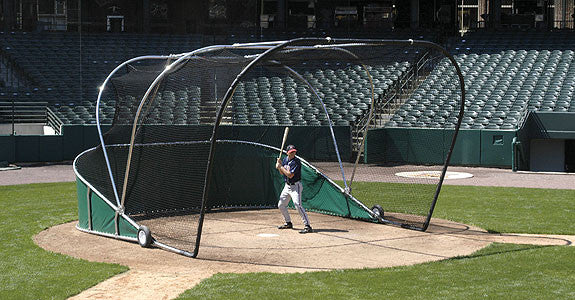Throw and Care of the Arm June 23 2015, 0 Comments
JIM R0NAI
DIRECTOR OF PHYSICAL THERAPY AND SPORTS MEDICINE AT REHABILITATION ASSOCIATES, INC., STRATFORD, CT
Although baseball is not traditionally considered as a high impact or collision sport, many players between the ages of 10 and 18 who participate in baseball suffer from some degree of musculotendinous contusion, strain or ligamentous sprain.
In organized situations, the majority of these injuries are initially managed utilizing appropriate basic first aid strategies. These include a primary assessment, immobilization of the injured body part, the application of compression to the injured area, elevation of the injured body part when applicable and finally the application of ice.
Many strains, contusions and sprains sustained in baseball are not severe enough to require long term management of a physician or medical professional.
After an initial first aid evaluation, most soft tissue injuries are managed conservatively without further professional medical advice. In these instances, parents, coaches and athletes are left to progress activities and implement the use of thermal agents (ice and heat) as important adjuncts to the healing and recovery process.
During this process, questions and concerns regarding the proper parameters for the use of ice and heat and the transition from one to the other often arise. It is essential that the decision-makers understand the proper use of ice and heat and the effects, both positive and negative, associated with them.
The use of cryotherapy (ice related products) in the management of acute ligament sprains, muscle and tendon sprains and contusions, is a widely accepted method of treatment by sports medicine professionals.
Although most individuals perceive ice and associated cooling agents as uncomfortable, they have been proven effective in decreasing swelling and spasming associated with musculoskeletal injuries.
Pain reduction as a result of the application of ice or other tissue temperature reducing agents often allows the initiation and return of early joint range of motion. Early, normal joint motion patterns promote the realignment and repair of damaged tissues at the cellular level.
The consensus among sports medicine professionals is that ice is most effective when it is applied to injured tissue two to three times per hour during the first 48 to 72 hours following an injury in 12 to 20 minute increments starting as immediately close to the time of injury as possible.
This initial two to three day period or acute phase of the injury is the most critical time when the application of a cooling agent can limit harmful effects of the immune related inflammatory response to injury. This creates a positive impact on an athlete’s overall recovery while decreasing time away from play. Conversely, the application of a heating agent during the 48 to 72 hour acute phase of injury can serve as an irritant and exacerbate a resolving condition.
To avoid the risk of damage to superficial tissues or in stances where an individual is extremely sensitive to cold, use of a thin cotton barrier between skin and ice should be considered. It is also important to take extra precautions when applying in proximity to the ulna nerve, which is located in the medial elbow, and the peroneal nerve located in the lateral aspect of the knee. In both instances, the time of ice application should be closely monitored and the use of an ice barrier is advised.
The range of varieties and prices for ice and ice related products are wide. In most cases, double bagged crushed ice or frozen vegetables conform nicely to most body parts and are inexpensive. Refreezable gel packs are also a good choice. They are relatively inexpensive and easily obtained at most local pharmacies.
Heat and heating agents are not applied to injured soft tissue in an acute situation. Heat is extremely effective during the rehabilitation phase of injury after acute signs and symptoms have resolved. Heating pads, warm whirlpools and moist hydrocolators have been documented as excellent methods of increasing local musculotendinous circulation, promoting muscular relaxation, while enhancing healing of tissues at the microscopic cellular level.
Muscle, tendon, ligament and overall joint flexibility are also increased as a result of higher tissue temperatures. Once an injury has progressed beyond the acute phase, increased blood flow to damaged soft tissue as a result of the application of heat provides them with oxygen and nutrients that are vital to repair and healing.
Safe parameters for use of heat in the absence of any acute signs and symptoms include application in 15 to 20 minute increments as a stand-alone intervention or prior to any gentle range of motion activities. Heat may be utilized one or two times per hour and should not be applied directly to skin except in aquatic situations.
Skin should be draped with a towel or barrier and closely monitored in order to avoid development of excessive redness, mottling or blistering associated with various degrees of thermal burns. There are many easily accessible and inexpensive forms of heat. Warm, moist compresses, microwaveable gel packs, warm soaks or showers and electric heating pads (models with built-in timers recommended), safely and effectively provide the increases in tissue temperature necessary to achieve positive therapeutic effects on healing soft tissues.
As a baseball player’s practice time, game time and overall intensity of play increase, so does their exposure to minor sprains, contusions and strains. In acute situations where injured soft tissue signs and symptoms include redness, swelling, localized temperature increase, pain and loss of function, ice and related cooling products are safest and most effective as mediating these characteristics.
Following the first two to three days of injury when sub-acute injury management and rehabilitation have begun, a transition to the application of heat is beneficial. Should an injury not progressively resolve, the advice of a medical professional should be sought?
Proper use of thermal agents like ice and heat in preventative, acute and rehabilitative situations is an integral component of sports injury management and can ultimately make a difference in when and if an athlete returns to practice and competition.










